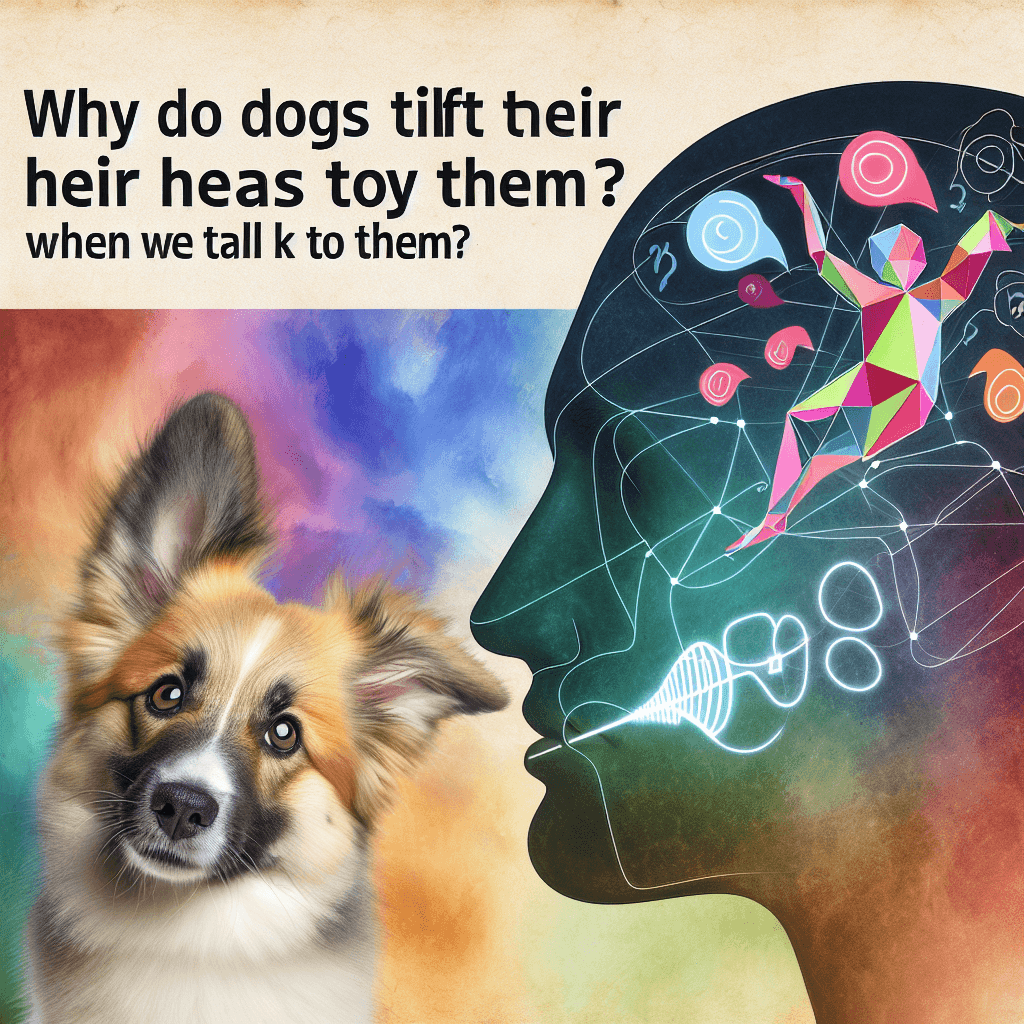Why do dogs tilt their heads when we talk to them
That adorable head tilt isn't just for show; it’s a fascinating glimpse into how your dog’s brain is working hard to understand and connect with you.


Too Long; Didn't Read
TLDR: Dogs tilt their heads to hear us better by adjusting their ears, to see our faces more clearly around their snouts, and because they learn we reward the cute behavior with positive attention.
Decoding the Canine Head Tilt: Why Do Dogs Tilt Their Heads When We Talk to Them?
It’s a moment every dog owner cherishes: you’re speaking to your furry friend, and in response, they cock an ear, furrow their brow, and tilt their head with an expression of pure, quizzical concentration. This endearing gesture is one of the most universally loved canine behaviors, but is it just a cute quirk, or is there more going on behind those intelligent eyes? The truth is, this simple action is a fascinating window into how dogs perceive and process our world. This post will delve into the leading scientific theories behind the canine head tilt, exploring how it helps them hear better, see more clearly, and even connect with us on a deeper level.
The Main Theories Behind the Head Tilt
While no single reason explains every head tilt, researchers and animal behaviorists have identified several compelling factors that contribute to this behavior. It’s likely a combination of these elements, depending on the dog and the specific situation.
1. To Hear Us Better
The most widely accepted theory is that dogs tilt their heads to improve their hearing. While a dog's sense of hearing is far superior to ours, their brain still needs to process where a sound is coming from. Their movable outer ears, called pinnae, act like adjustable satellite dishes, swiveling to capture sound waves.
By tilting their head, a dog can slightly adjust the position of each ear, helping their brain better calculate the tiny time difference it takes for a sound to reach each one. This allows them to more accurately pinpoint a sound's location and distance. They aren’t just hearing what you’re saying; they’re trying to figure out where it’s coming from and what it means in their environment.
2. To See Us More Clearly
Have you ever considered how a dog’s muzzle affects its vision? According to psychologist Dr. Stanley Coren, a dog's snout can create a significant blind spot. To get a sense of this, try holding your fist up to your nose and looking at someone’s face. You’ll notice your view of their lower face and mouth is partially blocked.
For a dog, tilting its head is a simple way to maneuver its muzzle out of its line of sight. This gives them a clearer view of our facial expressions, especially our mouths, which are crucial non-verbal cues. Since dogs are masters of reading human body language, getting an unobstructed view helps them better interpret our intent and emotions. This is especially true for breeds with longer muzzles.
3. It's a Sign of Concentration and Intelligence
Recent research suggests that a head tilt might be directly linked to a dog’s cognitive processing. A 2021 study from Eötvös Loránd University in Hungary found a fascinating correlation between head-tilting and word recognition.
Researchers observed that "gifted word learner" dogs—those that could remember the names of dozens of toys—tilted their heads significantly more often when their owner requested a specific toy. The study, published in Animal Cognition, suggests the head tilt could be a sign that the dog is accessing its memory or processing relevant information, much like a human might purse their lips when concentrating. It indicates that the dog has identified a meaningful word and is thinking intently about it.
4. An Empathetic and Learned Response
Finally, the head tilt is a powerful social signal. Dogs are incredibly attuned to human emotion, and they often use the pitch and tone of our voice to gauge our feelings. A head tilt can be a display of engagement—a sign that they are listening closely and trying to understand our emotional state.
Furthermore, this behavior is often reinforced by us! When a dog tilts its head, we typically react with positive feedback:
- We praise them ("Who's a good boy?").
- We offer physical affection, like a pat or a scratch.
- We might even give them a treat.
Dogs quickly learn that this specific action gets them a positive reward, so they are more likely to repeat it. In this way, the head tilt becomes a learned behavior designed to strengthen the bond between dog and human.
Conclusion
So, why do dogs tilt their heads when we talk to them? The answer isn't a single "aha!" moment but a blend of physiology, cognition, and social intelligence. This charming gesture is a multi-faceted behavior that helps them better hear our words, see our expressions, process familiar commands, and show their engagement. It’s a testament to how hard they work to understand and connect with us across the species divide. The next time your dog cocks their head, take a moment to appreciate it not just as a cute quirk, but as a profound sign of a mind hard at work, trying to bridge the gap and understand its favorite human.
More Articles

What creates the warm crackle sound unique to vinyl records?
That iconic warm crackle is more than just dust and nostalgia—it's the sound of a microscopic story of friction and physics being told in real-time.

Why do some insects build and wear a backpack made from the corpses of their victims?
For some of nature's tiniest predators, the best defense is a grisly offense—building a protective shield from the corpses of their vanquished prey.

Why are Earth's deserts not random, but aligned in two distinct belts?
It’s not a coincidence that the world's great deserts are aligned in two perfect bands; they are the direct creation of massive, invisible rivers of air that perpetually circle the globe.